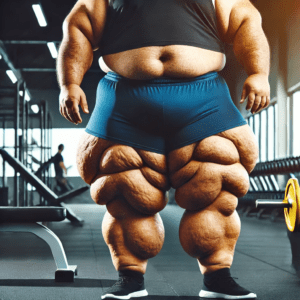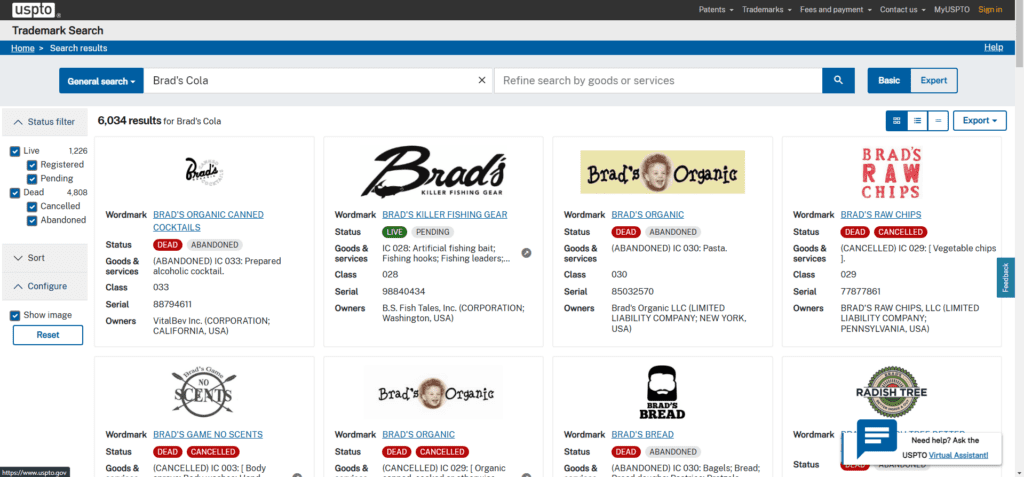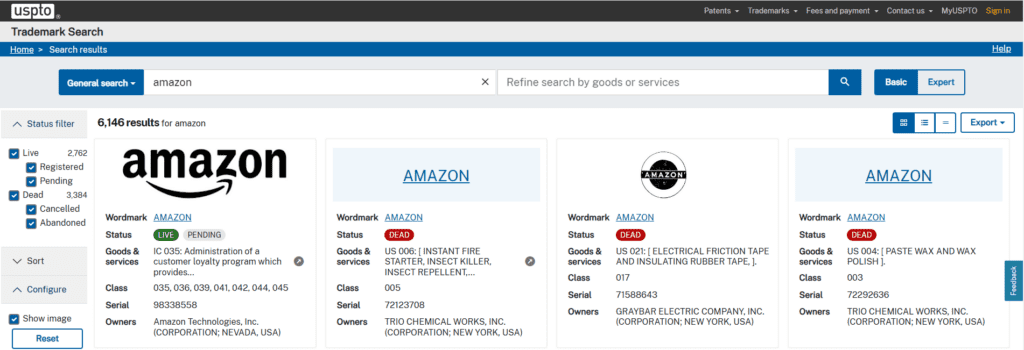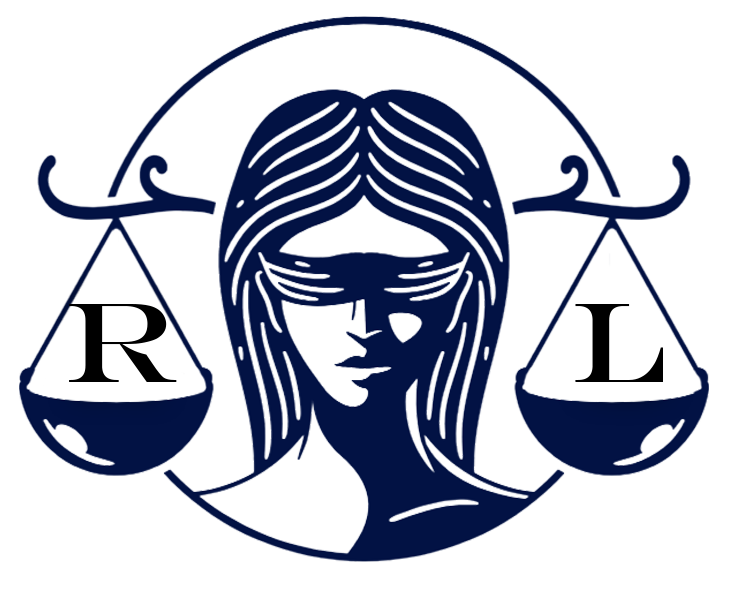Tell me if you can guess which companies own these trademarked symbols:
- Two golden arches making an “M.”
- A red circle with a white interior accompanied by a red dot in the middle.
- A checkmark with a swoosh tail.
- A partially bitten apple.

Without naming those companies, you know exactly what company I’m referring to… granted, I may have given away the last one in the description itself.
Trademarks – Everything you need to know
Trademarks are a way to define and protect your brand. Coming up with a logo or sketching out ideas for your business, brand, or product can be a lot of fun—it’s where your vision really starts to take shape. But what’s not fun? Running your business for years only to find out someone else is slapping your logo on their products, confusing your customers, and cashing in on your hard work. Trademarks help your customers recognize your brand in a creative way, but they can also attract bad actors looking to profit from your success.
What is a Trademark?
A trademark is a unique word, symbol, phrase, logo, or design that represents your brand and helps people recognize your products or services. Think of it like a signature for your business—something that sets you apart and prevents others from copying or imitating your brand in a way that confuses customers. Trademarks aren’t just symbols like McDonald’s golden arches.
Nike: Just Do It.
Coca Cola as purely the text and also as the stylized cursive that you see on its products.
Even the shape of a Coca Cola bottle can be and is trademarked.
If something is indicative of your brand uniquely, then it can be trademarked (usually). They come in:
- word marks
- logos
- stylized word marks
- trade dress
- service marks
- collective mark
- certification mark
- sound mark
- motion mark
- hologram mark
- pattern mark
- color mark
- scent mark
- position mark
- more
For most situations, the ones you’ll be filing for are word marks and logos. Trade dress is a good option as well if you have a physical product with a unique look to it.
Word marks are exactly what they sound like. It’s the text involved.
Logos are designs, drawings, graphic mock ups, etc., It’s a visual image that is representative of your brand.
Trade Dress is the overall “vibe.” It’s the look of a product or it’s container or branding that makes it synonymous with your brand. Imagine a glass Coca Cola bottle. No other soda comes in a bottle like that. If you saw that bottle without any liquid or label on it, you would know what brand it’s from. That is trade dress.

Does a Trademark Mean No One Can File a Trademark For the Phrase I do?
Trademarks are registered under specific classes or categories, which define the types of goods or services they protect. In some cases, you can trademark a word or phrase that already exists, as long as it’s in a completely different category. However, famous trademarks—like Nike, Coca-Cola, or McDonald’s—receive much stronger protection. These brands are so widely recognized that using their names in any industry could cause brand confusion and be legally challenged. For example, while “Brad’s Cola” might be fair game, “Coca-Cola Plumbing Company” wouldn’t stand a chance—Coca-Cola’s brand is too iconic and legally safeguarded.
How do you know if something is to the level of “famous?” The term to consider is brand confusion.
What is Brand Confusion with trademarks?
Brand Confusion is when you decide to go ahead with Coca Cola Plumbing Company. The term “Coca Cola” is so synonymous with the drink, that it would be unreasonable to think Coca Cola Plumbing Company isn’t still Coca Cola the beverage company. Think of Disney. You couldn’t make a reasonable argument to call your company Disney ANYTHING without it causing brand confusion. Brand confusion is kind of like riding coattails. Nobody would think Disney Hammocks are anything but hammocks with princesses on them.
While the examples above are clearly famous, what about Apple? Apple is famous. Apple’s one of the biggest brand’s in the world. You shouldn’t be able to call anything Apple then due to its fame, right?
The thing is, you can reasonably make the argument that Apple Mechanics in Apple Valley, CA is not trying to cause brand confusion with the company that made the iPod. Different categories and no brand confusion. If I were to start a brand called Apple Electronics and then come out with some headphones, now we’re back into brand confusion.
That’s a lot of rambling to essentially say that brand confusion is about reasonableness. Is the trademark you are wanting to file going to cause the standard, reasonable person to think you’re referring to another already-established brand?
Why Do I Need a Trademark?
Let’s say you’re an entrepreneur and you are building a soon-to-be successful gym apparel brand. You’re investing thousands of dollars on samples and hundreds of hours on designs. You finally launch your brand and it takes off. You launched Thick Thigh Fitness Gymparel. You never trademarked your brand. You’re getting in a hundred orders per day or more. You get a customer complaint about your gym shorts being very cheap quality. What? You pay a premium for high quality stiching and fabric. That can’t be true.
You dig into the customer complaint and realize they bought some Thick Thigh Fitness Gymparel off of a random site that you have nothing to do with. It turns out that someone is counterfeiting your successful brand with some cheap knock offs. What do you do now?
Let’s Say You HAD a Trademark
Well, if you had your trademark in place, you very easily can submit an infringement claim to that site host to get the infringing listing down due to clear trademark violations. They’re advertising the pieces with the title “Thick Thigh Fitness Gymparel Large Shorts.” The clear usage of your trademark means you have full rights to get that listing down.

Let’s Say You DIDN’T Have a Trademark
What if you didn’t have that trademark in place? Well, unless they’re stealing your images, you’d have a lot less standing to get that listing down. You could make your case that this is your brand and you don’t authorize it and blah blah blah. You’re going to run into a lot of headaches and push back.
There are quite a few alternative options you can take, but without the registered trademark, you are without the easiest course of action to get those infringing listings removed.
Additionally, let’s say that infringer files for a trademark for Thick Thigh Fitness Gymparel without you knowing. Once it gets granted, you could be looking at BIG problems if you don’t know how to navigate the legal system. You’ll be paying thousands on an attorney instead of hundreds on a trademark.
Where Do I Get a Trademark?
The United States Patent and Trademark Office, USPTO, is the governing body that manages, issues, and examines IP registrations. This is where you file for a trademark. This is where you respond to responses from examiners during the registration process. You can also use that site to research your prospective trademark to see if it already exists.

How to Check for Existing Trademarks.
You can go to the trademark search portion of the USPTO and start plugging in your phrases.

You can play with the filters on the left or top to help refine your searches. If my search turns up a lot of options that are very close to what I’m looking for, I’ll uncheck the Dead box in order to narrow down and see what’s actually active or pending. Also in the picture above, notice that all of the results are stylized. When I say stylized, I mean they are not just plain text wordmarks. There is some branding and font and color to it.
In the example below, you can see where some plain old wordmarks come in. They’re the ones with the blue background and plain font. No stylization. Also, note the differences between results 1, 2, and 4. Amazon is a VERY famous brand, but Amazon insect killer and Amazon paste won’t reasonably be confused with Amazon the marketplace.

How Much Does It Cost To Get A Trademark?
There are multiple options for filing a trademark.
- TEAS Plus: $250 per class of goods/services
- TEAS Standard: $350 per class of goods/services
What’s the difference?
- TEAS Plus
- Cheaper with stricter requirements
- Must chose category from already established list
- Must meet USPTO requirements upfront
- Must already have filing basis
- TEAS Standard
- More expensive with more wiggle room
- Can customize the description of goods/services instead of picking from an established list
- Better option if your trademark doesn’t fit neatly into existing categories
- Don’t need to have filing basis yet
Filing Basis = the reason you’re applying for a trademark. Can be:
- Use in Commerce – already in use with sales
- Intend to Use – haven’t used commercially yet
- Foreign Registration – you already have the trademark registered in another country and are bringing it to registration here
What about the per class of goods? What does that mean?
Let’s take a look at my favorite brand of shoe: Hey Dude.

When filing a trademark, products and services are categorized into International Classes (IC) to help distinguish different industries.
International Class 025 (IC 025) – Covers clothing, footwear, and headgear. This is the main classification you need to know if you’re filing a trademark for apparel or related items.
U.S. Classes 22 and 39 – These are historical subclasses used internally by the USPTO under IC 025. They are primarily for administrative purposes and do not affect your trademark protection.
When filing a trademark, focus on the International Class (IC) that applies to your product. If you see U.S. Class numbers (like 22 or 39) during the process, don’t worry—they are just internal references. Your main concern is ensuring your trademark is filed under the correct International Class to protect your brand in that category.

How Do I File For a Trademark?
Here’s the link: APPLY
- Sign up for a USPTO account
- Go to the apply link above
- Press the green Trademark Center button
- Click Apply and register a trademark
- Follow the rest of the steps from there
They walk you through it better than I will here.
What’s the Difference Between the TM and the R?

The R signals that the trademark is registered and legit.
The TM signals that there is an unregistered trademark at play. This means that the entity has not filed for it yet but uses this phrases to identify their business. Kind of like a “I plan on trademarking this so don’t think about using it.”
Summary
Trademarks are essential for protecting a brand’s identity, preventing others from using similar names, logos, or designs that could cause customer confusion. They come in various forms, including word marks, logos, trade dress, and even unique elements like sounds or scents. While trademarks are registered under specific categories, famous brands like Nike and Coca-Cola receive broader protection, making it nearly impossible for others to use their names in any industry.
Securing a trademark early helps businesses avoid legal disputes, counterfeit issues, and potential rebranding costs. The USPTO oversees trademark registration, offering options like TEAS Plus ($250 per class) and TEAS Standard ($350 per class) based on the level of flexibility needed. While the ™ symbol indicates an unregistered trademark, the ® symbol represents a fully registered one. Ultimately, obtaining a trademark ensures brand security, making it easier to enforce legal rights and maintain a strong business reputation.
Thanks,


